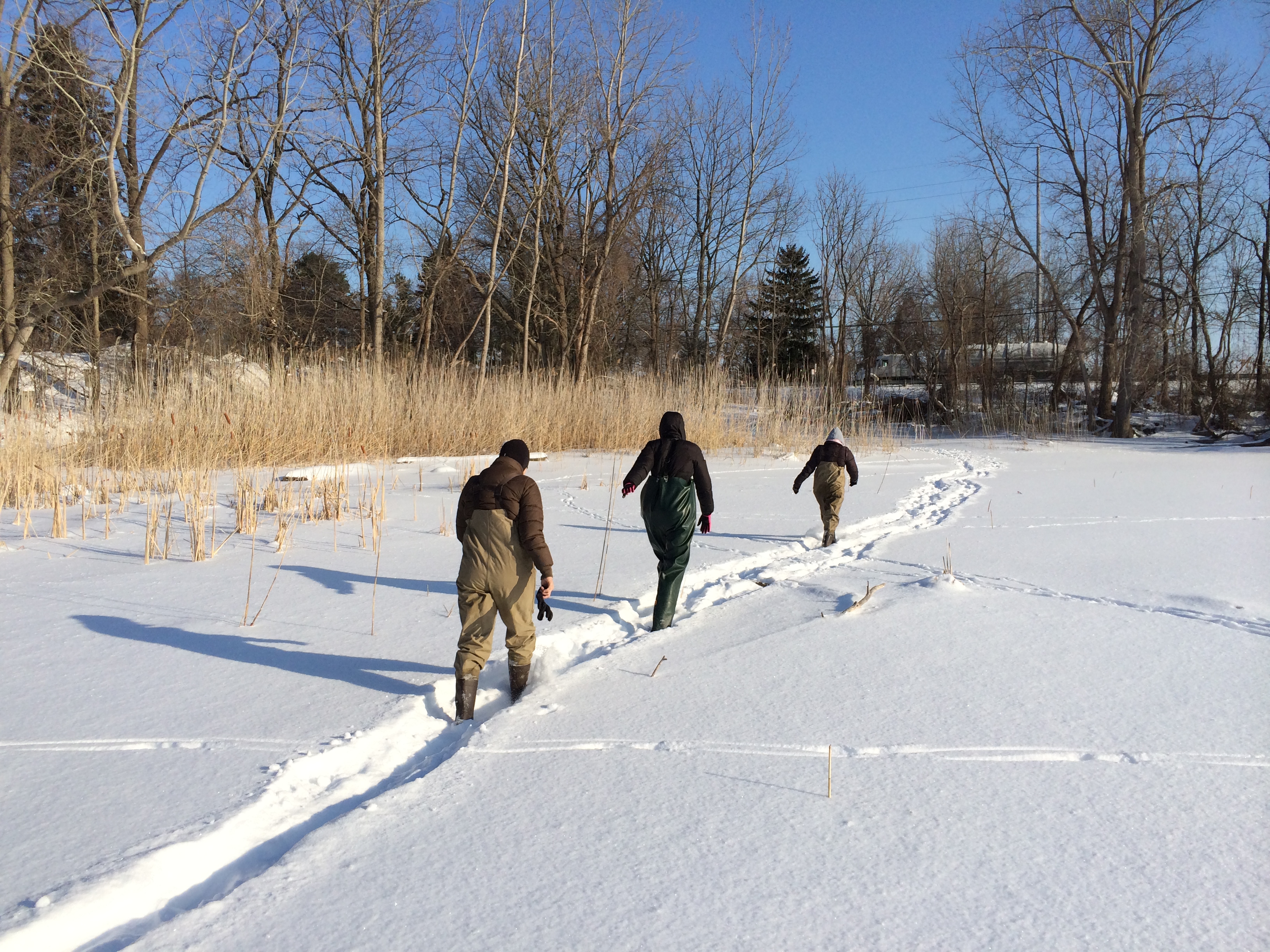I was recently down at the Columbus Center of Science and Industry (COSI) for the Portal to the Public event. To get kids (and adults) more interested in microbiology, we set up all the necessary equipment to make Winogradsky columns. After incubation, these columns can often look really colorful. With some sediment from the Olentangy River, chalk, sulfate, newspaper, and river water, we sent about 150 columns home with various families from across Ohio. Hopefully some will get the sunlight they need to bloom….
Posts
Sampling in Colorado…
While Paula was battling the elements in North Dakota, Bob Danczak and I traveled to Rifle, Colorado, to carry out some sampling in the shallow aquifer. We were able to get dissolved oxygen concentrations from lysimeters located in the vadose zone, and characterized the geochemical profile across the hyporheic zone at the Colorado River/Rifle site interface. All in all, a successful trip. Thanks to Ken Williams and Chad Hobson (LBNL) for all their help at the site!
Paula braves North Dakota…
Paula Dalcin Martins just got back from a wild week in Jamestown, North Dakota, where she was sampling prairie pothole lakes with Yo Chin, Brandon McAdams, and Rachel Anderson. Somewhat inevitably, North Dakota in early May was rather brisk, although warmer temperatures towards the end of the week made sampling more agreeable. Many sediment cores and lake water samples were collected…
Did archaea wipe out most life on Earth?
I just saw this paper in PNAS that’s pretty interesting. The authors from MIT and the Chinese Academy of Sciences suggest that huge pools of acetate were present in the oceans about 250 million years ago. Archaea in the oceans were unable to utilize this carbon, until they obtained genes for acetoclastic methanogenesis via gene transfer. Suddenly, this acetate was available for growth and respiration, resulting in ‘super-exponential’ increases in methane on Earth. It was this methane that killed off a large portion of life on Earth.
Well worth a read anyway…
Sampling in the snow….
Cold weather sampling seems to have been a recurring theme so far this year…
We just got back from sampling a couple of cores at Old Woman’s Creek, an estuary study site at the southern end of Lake Erie
(Below) It turns out that waders are useful even if all the water is frozen…
(Above) Kelly Wrighton watches as Kay Stefanik and Lindsey Solden drill through the ice
Trends and Challenges in Sampling the Deep Subsurface
Later in February, we (in collaboration with Dr. Kelly Wrighton, Dr. Paula Mouser, and Dr. Dave Cole) will host a workshop titled ‘Trends and Challenges in Sampling the Deep Subsurface’
The workshop aim is to bring together scientists with experience in handling and working with deep subsurface samples, and develop best practices for future work in these environments.
More information here: link
The metagenomics fight back begins…
The continued description of purely 16S rRNA gene surveys as ‘metagenomics’ continues unabated. Whether this is down to a lack of understanding of what ‘metagenomics’ actually encompasses, or a desire to link research to a hot topic such as metagenomics, it’s a trend that dilutes the understanding of what actual metagenomics can accomplish for members of the public, and scientists in other fields….a couple of recent blog posts from Jonathan Eisen and Mick Watson have highlighted this, and are well worth reading:
From Jonathan Eisen’s The Tree of Life Blog
From Mick Watson’s opinomics blog
So the lab in Biological Sciences 656 is pretty much ready for action now. Almost everything has been installed and tested, including our TOC and Guava cell sorter. Some pics below….
The sampling must continue….
New paper looking at effects of shallow geothermal energy processes on microbial activity
This is a new paper in Environmental Science & Technology, looking at the effects of heating and cooling processes (associated with geothermal energy) on microbial redox processes and community structures.
This follows on from an earlier paper in 2009 that first reported some of these changes in subsurface systems associated with geothermal energy












